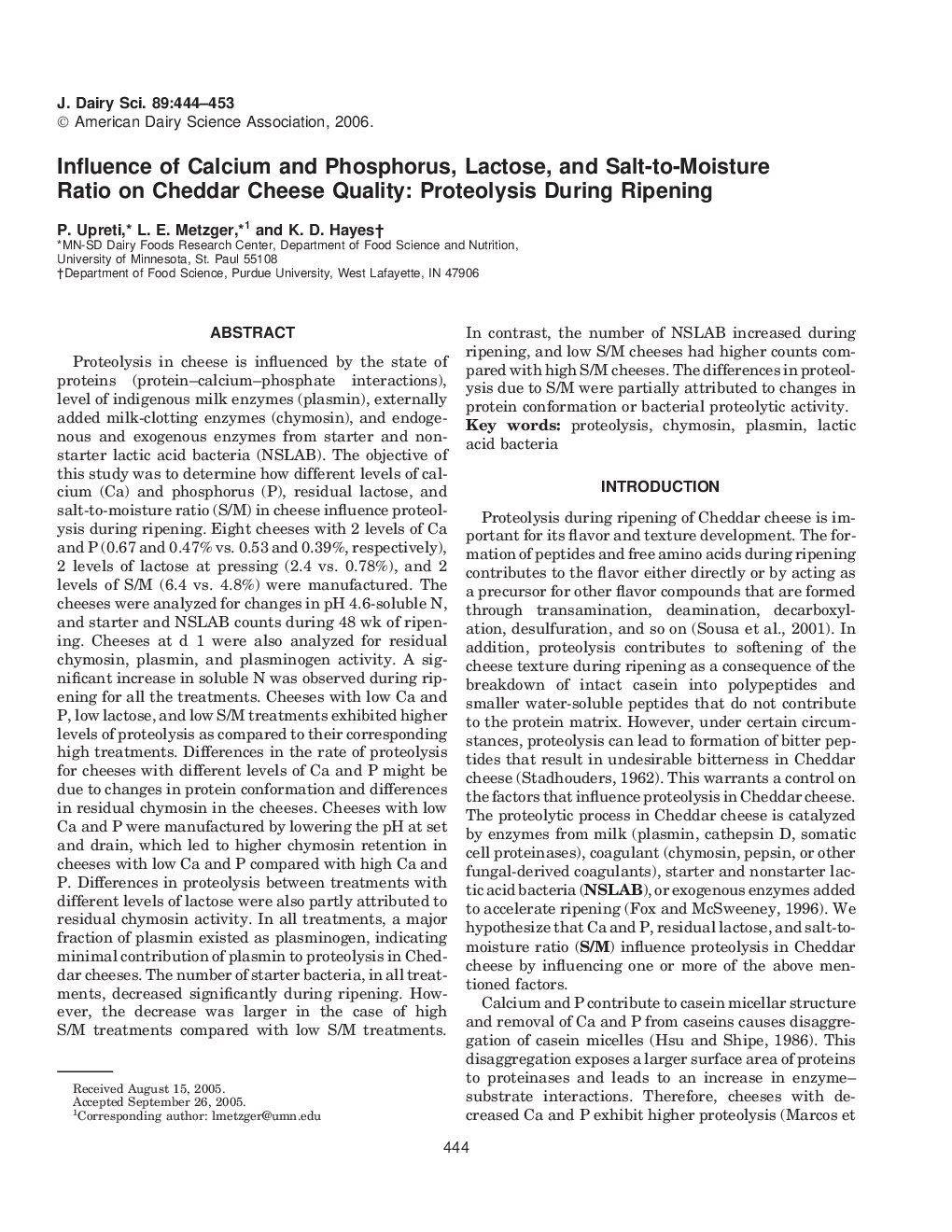| کد مقاله | کد نشریه | سال انتشار | مقاله انگلیسی | نسخه تمام متن |
|---|---|---|---|---|
| 2441199 | 1108134 | 2006 | 10 صفحه PDF | دانلود رایگان |

Proteolysis in cheese is influenced by the state of proteins (protein–calcium–phosphate interactions), level of indigenous milk enzymes (plasmin), externally added milk-clotting enzymes (chymosin), and endogenous and exogenous enzymes from starter and non-starter lactic acid bacteria (NSLAB). The objective of this study was to determine how different levels of calcium (Ca) and phosphorus (P), residual lactose, and salt-to-moisture ratio (S/M) in cheese influence proteolysis during ripening. Eight cheeses with 2 levels of Ca and P (0.67 and 0.47% vs. 0.53 and 0.39%, respectively), 2 levels of lactose at pressing (2.4 vs. 0.78%), and 2 levels of S/M (6.4 vs. 4.8%) were manufactured. The cheeses were analyzed for changes in pH 4.6-soluble N, and starter and NSLAB counts during 48 wk of ripening. Cheeses at d 1 were also analyzed for residual chymosin, plasmin, and plasminogen activity. A significant increase in soluble N was observed during ripening for all the treatments. Cheeses with low Ca and P, low lactose, and low S/M treatments exhibited higher levels of proteolysis as compared to their corresponding high treatments. Differences in the rate of proteolysis for cheeses with different levels of Ca and P might be due to changes in protein conformation and differences in residual chymosin in the cheeses. Cheeses with low Ca and P were manufactured by lowering the pH at set and drain, which led to higher chymosin retention in cheeses with low Ca and P compared with high Ca and P. Differences in proteolysis between treatments with different levels of lactose were also partly attributed to residual chymosin activity. In all treatments, a major fraction of plasmin existed as plasminogen, indicating minimal contribution of plasmin to proteolysis in Cheddar cheeses. The number of starter bacteria, in all treatments, decreased significantly during ripening. However, the decrease was larger in the case of high S/M treatments compared with low S/M treatments. In contrast, the number of NSLAB increased during ripening, and low S/M cheeses had higher counts compared with high S/M cheeses. The differences in proteolysis due to S/M were partially attributed to changes in protein conformation or bacterial proteolytic activity.
Journal: Journal of Dairy Science - Volume 89, Issue 2, February 2006, Pages 444–453